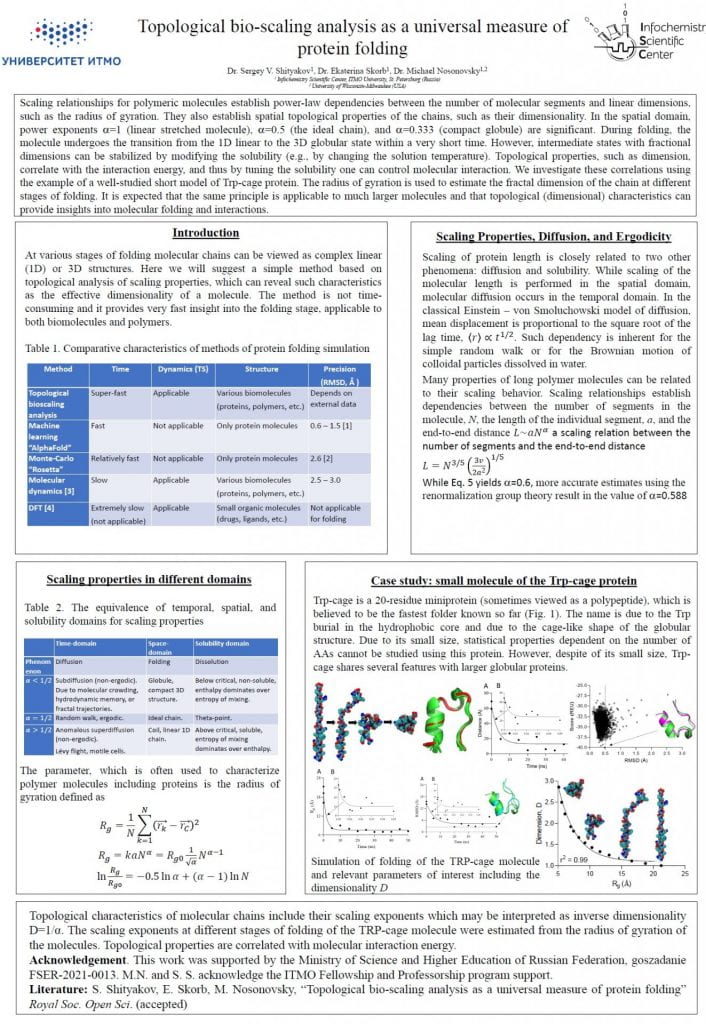Scaling is a fascinating phenomenon. Another work on scaling (this time in biochemistry) was presented at the ITMO University InfoChemistry Day in St. Petersburg on May 29, 2022.
S. Shityakov, E. Skorb, M. Nosonovsky, “Topological bio-scaling analysis as a universal measure of protein folding” Royal Soc. Open Sci. (accepted)
Scaling relationships for polymeric molecules establish power-law dependencies between the number of molecular segments and linear dimensions, such as the radius of gyration. They also establish spatial topological properties of the chains, such as their dimensionality. In the spatial domain, power exponents a=1 (linear stretched molecule), a=0.5 (the ideal chain), and a=0.333 (compact globule) are significant. During folding, the molecule undergoes the transition from the 1D linear to the 3D globular state within a very short time. However, intermediate states with fractional dimensions can be stabilized by modifying the solubility (e.g., by changing the solution temperature). Topological properties, such as dimension, correlate with the interaction energy, and thus by tuning the solubility one can control molecular interaction. We investigate these correlations using the example of a well-studied short model of Trp-cage protein. The radius of gyration is used to estimate the fractal dimension of the chain at different stages of folding. It is expected that the same principle is applicable to much larger molecules and that topological (dimensional) characteristics can provide insights into molecular folding and interactions.

With colleague Dr. Sergey Shityakov (MD, PhD, DSc (Hab)) next to our poster.

See also about the earlier work on scaling:
* “The Kramers theorem, excluded volume, and scaling in droplet clusters”
* “Allometry and Ergodicity breaking in a fractal capillary network”